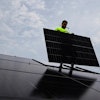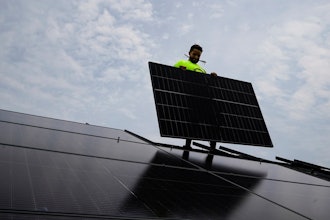There’s a quiet evolution going on inside our factories and manufacturing plants — and it soon will extend to the energy grid.
It’s an energy evolution — fueled by the confluence of Industrial Internet Protocol (Industrial IP), EtherNet/IP communications and energy management applications in industrial plants. Industrial plants’ energy partners — their power suppliers — will play a central role in this progression, working to advance plants’ energy efficiency goals.
Near future: Deeper insight into energy consumption
In the U.S., manufacturers have traditionally focused on efficient energy use. But the industrial sector is beginning to consider the other side of the equation: power draw in their factories.
Those with the ability to actively manage consumption will soon be producing more of their own renewable energy, actively partnering with utilities — and even generating new revenue streams from utility rebates and remaining tax credits.
Unified network capabilities are simplifying data collection and integration — within the plant, across the enterprise — and to the grid and back. We can expect to see more manufacturers actively working with power generators, combining meters, sensors and monitors with wireless technology and software.
With more meaningful energy consumption data, plants can leverage energy as a resource. We’ll see more manufacturers buying power at lower costs, turning off non-essential equipment, shedding loads to save utility costs — and eventually customizing energy demand by facility, production line and even machine.
Power generators reaching out to plants
The game is changing for power generators, too. New sustainability policies — along with the nation’s Smart Grid initiative — are driving generators to reach out to the industrial sector. Many more utilities will use advanced communications and information technology to understand manufacturers’ energy needs.
Power generators will collect data from industrial plants, collaborate on capacity planning and help plants make better decisions about efficient industrial operations.
Manufacturers can fast-forward their operations strategy to take advantage of this energy evolution — and reap the benefits of collaborating with their local power generators sooner. Here are some first steps.
1. Meet with your local utility
Show them your plant operations, energy systems and long-term energy optimization strategy — then listen. Your utility’s industrial energy experts can provide pointers on your energy audit, best metering approaches and priority capital investments.
2. Conduct a facility audit
An audit will help you understand your plant’s electrical infrastructure. You’ll identify your biggest energy draws — from air compressors to production lines.
3. Install sensors where needed
Installing sensors where critical demand is greatest can help you predict patterns of consumption and measure load differentials within your plant — defining energy demands more precisely.
4. Identify and implement metering and tracking systems
Once you know what areas, processes and equipment you want to tack and measure, you can phase your priorities and begin implementation.
5. Keep working with your local utility
As you aggregate more energy data and begin to see clear consumption patterns, your utility can help you refine your strategy — and advise you on rebates and alternative power generation, too.
With more meaningful energy consumption data, industrial energy consumers will tame their consumption while guiding power producers toward more efficient energy delivery. That’s a power play with no down side.























